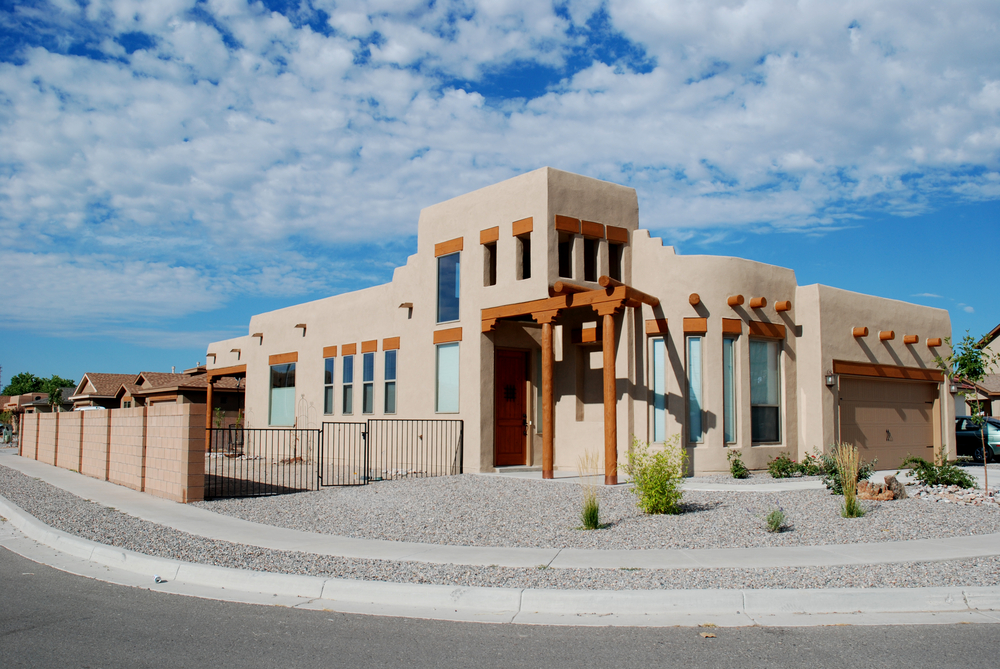
How to Preserve Adobe Architecture During a Remodel
Remodeling an adobe home can be both rewarding and delicate. Adobe architecture, with its thick earthen walls, rounded edges, and time-honored craftsmanship, represents centuries of cultural history and regional identity. Whether you’re working on an old hacienda or a newer adobe-style structure, the goal should always be to enhance functionality and livability without compromising the integrity of the adobe’s original charm. In this guide, we’ll explore adobe house renovation tips that strike the balance between preservation and modernization.
Adobe’s Historical and Structural Significance
Adobe construction has deep roots, particularly in the American Southwest, where indigenous peoples and Spanish settlers used locally sourced materials—primarily mud, sand, and straw—to form bricks that were sun-dried rather than kiln-fired. The resulting architecture was ideal for desert climates: thick walls kept interiors cool in summer and warm in winter, while the organic shapes and textures blended seamlessly with the surrounding landscapes.
When remodeling, it’s vital to remember that adobe homes are not just beautiful—they are fragile in certain respects. Unlike modern concrete or wood structures, adobe walls can be susceptible to water damage, foundation shifting, and erosion. This means that any work on an adobe home must begin with a deep respect for its materials and construction methods. Professionals often recommend working with contractors experienced in adobe home remodeling, as they are more familiar with the nuances of earthen architecture.
Planning a Remodel with Preservation in Mind
Before lifting a single hammer, it’s essential to conduct a detailed assessment of the property. This includes not only the structural integrity of the adobe walls and foundation but also the roof system, drainage patterns, and historical features like nichos, vigas (exposed ceiling beams), and kiva fireplaces. An architectural historian or preservation consultant can help identify which elements are critical to maintain the home’s authenticity.
Once you’ve established the condition and historical elements of the home, develop a remodeling plan that adheres to both your lifestyle needs and preservation goals. For example, if the kitchen or bathrooms require modernization, consider integrating materials and design elements that echo the original style—think hand-painted tiles, earth-toned plasters, or custom wood cabinetry that complements the rustic feel.
Additionally, any changes in floor plan should minimize the removal of original adobe walls. If you must alter room configurations, consider using lighter, non-load-bearing materials to preserve the adobe’s load paths and maintain as much of the original layout as possible.
Respecting the Adobe Material in Renovations
One of the most important adobe house renovation tips is to treat the material itself with the utmost care. Adobe bricks are breathable and work in tandem with the environment to regulate temperature and humidity. Therefore, applying synthetic stuccos or cement-based plasters can trap moisture, leading to internal erosion or structural failure.
Instead, use traditional materials—such as lime plaster or mud-based finishes—when patching or coating adobe walls. These materials allow the building to “breathe” and move naturally with temperature and humidity changes. If the structure has been previously coated with inappropriate materials, consider carefully removing them under professional supervision and restoring the walls with more compatible alternatives.
Also, pay close attention to water management. Adobe and water are not friends. Gutters, grading, and roof overhangs should be designed or re-engineered to channel water away from the walls. Adding French drains or gravel trenches can help improve drainage around the foundation without compromising the look of the property.
Modernizing Without Losing Character
A significant challenge in adobe home remodeling is bringing modern conveniences into the space without losing the soul of the architecture. This is where thoughtful design choices make all the difference. For example, modern insulation methods—such as installing rigid foam or blown-in cellulose inside ceiling cavities—can improve energy efficiency without disturbing the adobe walls. Radiant floor heating is another subtle yet effective way to warm adobe interiors while avoiding intrusive wall-mounted units.
When updating lighting and electrical systems, surface-mounted conduit painted to match the walls can be a less invasive alternative to chasing new wiring channels through adobe bricks. If new windows or doors are needed, custom wood frames can be designed to match the existing style, incorporating rounded edges or carved lintels to echo original details.
It’s also possible to integrate smart home technologies discreetly. Voice-controlled lighting, low-profile security cameras, and even solar panels placed on flat or hidden roof sections can add functionality while preserving the aesthetics.
Furnishings and interior décor should align with the adobe home’s timeless appeal. Handwoven textiles, artisanal pottery, and reclaimed wood furniture can enhance the organic ambiance, while built-in features like bancos (adobe benches) or nichos provide opportunities to celebrate the form and function of adobe construction.
Legal and Cultural Considerations
Adobe homes are often located in areas with strict building codes, especially if the home is part of a historical registry or located in a heritage district. Before beginning your adobe house renovation, consult with local authorities to understand any preservation requirements, zoning restrictions, or permits needed. In some cases, local or state grants may be available for historic renovations that meet certain criteria.
It’s also essential to recognize the cultural significance of adobe architecture. In many regions, these homes represent indigenous or colonial heritage. As such, respectful renovation practices should not only preserve materials but also honor the cultural story embedded in the home. Engage with community resources, tribal elders, or cultural historians when appropriate to ensure your remodel aligns with broader historical values.
Additionally, if your home includes any decorative elements such as murals, carvings, or traditional motifs, consider working with artisans trained in historical restoration. These experts can replicate or restore features using time-honored techniques that preserve authenticity.
Conclusion
Preserving adobe architecture during a remodel is as much about mindset as it is about materials and methods. It requires a willingness to work within the limits of an ancient yet resilient building tradition while finding creative ways to accommodate contemporary needs. By understanding the unique properties of adobe, respecting its historical and cultural context, and making smart, sympathetic design choices, you can ensure your remodel enhances rather than diminishes the enduring charm of your adobe home.
With the right approach, adobe home remodeling can result in a living space that’s not only beautiful and functional but also a meaningful continuation of a rich architectural legacy. Let your renovation tell a story—one that bridges past and present, tradition and innovation, earth and imagination.
Need a Remodeling Contractor in Santa Fe, NM?
Welcome to Apple Construction LLC.! Apple Construction LLC. has been in business since 2015 and has been serving Santa Fe, New Mexico and surrounding areas ever since. We specialize in new construction, remodels, additions, design consultations and planning, and so much more! At Apple Construction, LLC., we pride ourselves on our customer service and honesty. We provide each of our clients with quality work and dependability. Apple Construction LLC. has been locally owned and operated for the past 30 years and counting. We have local ties with the Chamber of Commerce and we are also proud members of the Better Business Bureau. Give us a call today and we’ll get started on your dream home!
Categorised in: Adobe Houses, Remodeling

